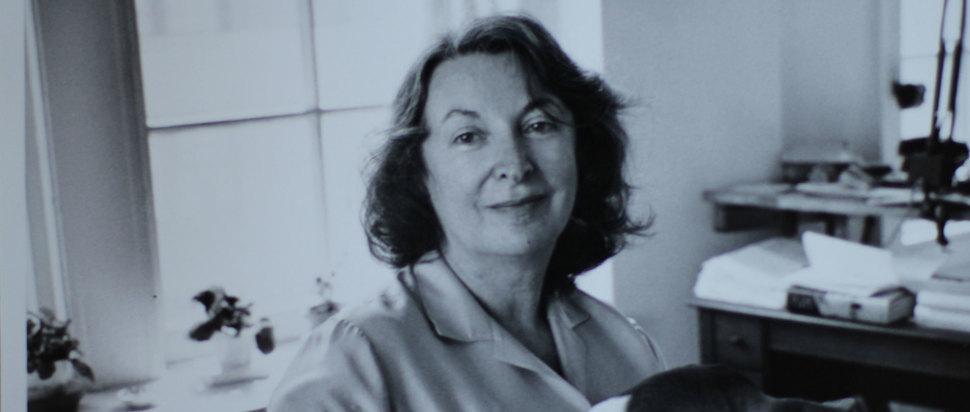Why Pauline Kael still matters
Rob Garver’s eloquently-crafted documentary about The New Yorker critic – What She Said: The Art of Pauline Kael – is a timely reminder of Kael's importance
On 14 August 1980, former New Yorker critic Renata Adler savaged the career and work of Pauline Kael in an admittedly eloquent but brutal takedown. Adler was an old-school Manhattanite, her prose ringing with the clink of martini glasses in uptown loft apartment parties. Despite her 8000-word cut-glass obliteration, published in the New York Review of Books, you couldn’t help but feel Adler was missing something about the power of Kael’s writing.
Take a poll of cinephiles today asking for their biggest influence and Kael would win hands down, even if her reputation has suffered from a few dings and dents in recent years. During her 60s and 70s heyday she drew a new readership to the New Yorker who were hungry for her frenetic, deeply personal reviews of that week’s latest releases. Kael wasn't the first film critic to have significant mainstream influence, but unlike many of her peers she's still widely read today.
What Adler ignored was Kael’s ability to connect with a wide readership, while still retaining analytical insight. Many (Adler included) glibly view Kael as an emotive populist – someone who wrote purely instinctually but lacked critical precision. They’re wrong. In an interview on PBS’s Writer’s Workshop back in 1982, Kael deals with such criticisms. Referred to as impressionistic, she recoils, observing how that word is often used disparagingly towards female critics. She notes that she’s as analytical as the next critic – she just won’t subscribe to one particular theory.
“What else does a critic work with if he’s honest but his own response? The other thing is academic opinion or consensus opinion, which means letting other people tell you what you think, which means you’re a damn fool and serve no purpose whatsoever.” Harsh but fair, and demonstrative of the way Kael shoots from the hip. Whether you like her or not, her work nevertheless teems with piercing, intellectual insights.
Kael started at the New Yorker in 1968 and throughout her career she remained unconcerned that her tastes tended towards the contradictory, happily slamming the excesses of Hollywood cinema, championing films with unabashed glee and refusing to be reined in (spare a thought for the magazine’s editor William Shawn, who battled her weekly… and weakly).
Six years before Adler’s article, Kael wrote an essay titled Onward and Upward with the Arts: On the Future of Movies that smartly captured the movie-going malaise. It might have been written 45 years ago, but its insights still resonate today.
“The new generation of high-school and college students are going to movies that you can’t talk about afterwards – movies that are completely consumed in the theatre.” Sound familiar? She continues: “Almost all current hits are jokes on the past, especially on old films – a mixture of nostalgia and parody, laid on with a trowel.” What would she make of mainstream audiences’ current cultural obsession with TV shows and movies of the 1980s?
Now Kael’s writing forms the subject of Rob Garver’s new documentary What She Said: The Art of Pauline Kael. Avoiding hagiography, Garver is squarely focused on the art. It reminds us that she was the ruling queen of American film criticism for two decades, with a gaggle of followers who hung on her every word, dubbed “The Paulettes.”
Garver gives a rundown on how her approach rubbed many people up the wrong way, most infamously Andrew Sarris, a man who equally redefined film criticism. Sarris, who passed away in 2012, was survived by his wife and fellow critic Molly Haskell, who features in the doc. It’s clear that some wounds never heal (understandably given some of the things Kael said), with Haskell offering up the blistering one-liner: “No male critic had as much testosterone as Pauline”.
Kael didn’t worry about making enemies (and she made many, including Joan Didion, who once said her criticism had a “petit-point-on-Kleenex effect that rarely stands much scrutiny”), but her love of movies is unquestionable. She might not have been infallible, but she was revolutionary.
While Garver hits the main beats of her life – including her upbringing on a chicken farm in Petaluma, California, the boho years as a (failed) playwright in Berkley in the 50s, and the birth of her daughter whom she raised single-handedly – it’s his focus on her writing that stays with you. Reading Kael’s work today feels like travelling with her in real-time as she unpacks what she thinks and feels about a film. Her passion for the subject is infectious. She was wrong about a lot, but she was always honest. She wrote many funny quips and smart aleck takedowns, and only Dorothy Parker rivals her for quotability.
One extract sticks out: “You have to be open to the idea of getting drunk on movies… our emotions rise to meet the force coming from the screen, and they go on rising throughout our movie-going lives… there’s something there that goes deeper than connoisseurship or taste. It’s a fusion of art and love.”
What She Said: The Art of Pauline Kael, 24 Jun, 6.10pm, Odeon Lothian Road; 29 Jun, 1.10pm, Vue OMNI
Read more about Edinburgh International Film Festival at theskinny.co.uk/festivals/edinburgh-festivals/film, and follow our coverage on Twitter (@theskinnymag), Facebook (www.facebook.com/TheSkinnyMag) and Instagram (@theskinnymag)
The Skinny is partnered with EIFF on Agnès Varda retrospective The Features of Agnès – details of the season here
To receive the best of the Scottish cultural scene in your inbox every week? Sign up to our mailing list!
